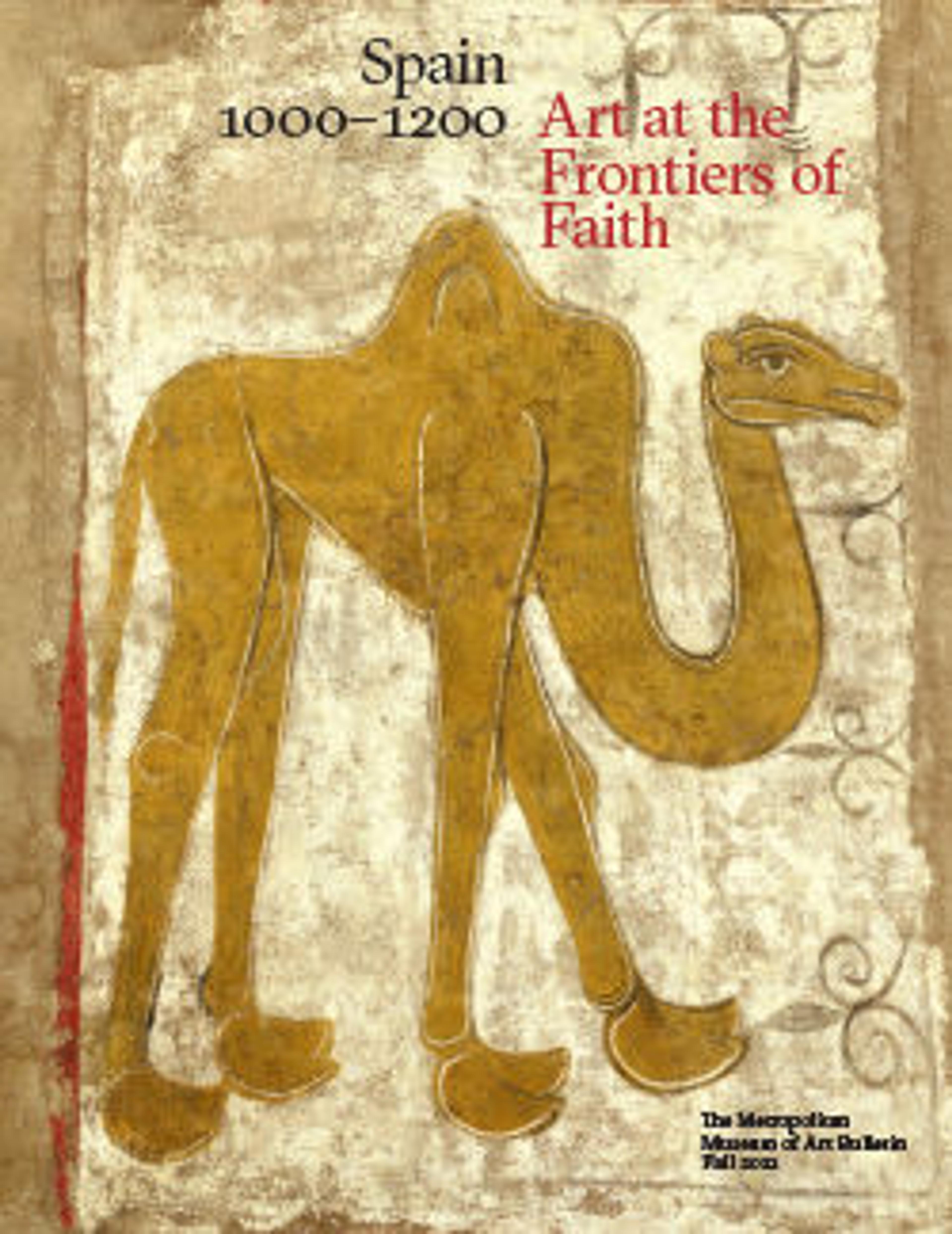Panel with San Millán
The relics of the sixth-century Spanish saint Aemilian were housed in an ornate shrine crafted of ivory, gold, and gems. We are remarkably well informed about the reliquary, which was made on the occasion of the translation (or transport) of the saint's relics from the monastery of Suso to the church of San Millán de la Cogolla, dedicated in 1067. Although the reliquary was damaged during the Napoleonic invasion of Spain in 1809, we know from a 1601 description that The Cloisters' plaque decorated the roof of the shrine. On it we see the saint tending his sheep in the bottom register, while above he receives a blessing from the hand of God at the top of a mountain.
In addition to this plaque, several other ivories from the shrine survive in European and American collections. One, in the State Hermitage Museum, Saint Petersburg, depicts the ivory carver and his assistant in the workshop and bears an inscription that identifies them as Master Engelram and his son Redolfo. Such images of artists were rare in this period, as was the practice of identifying artists by name.
In addition to this plaque, several other ivories from the shrine survive in European and American collections. One, in the State Hermitage Museum, Saint Petersburg, depicts the ivory carver and his assistant in the workshop and bears an inscription that identifies them as Master Engelram and his son Redolfo. Such images of artists were rare in this period, as was the practice of identifying artists by name.
Artwork Details
- Title: Panel with San Millán
- Artist: Master Engelram and his son Redolfo (Spanish, active Longroño, 1060–1090/5)
- Date: 1060–80
- Geography: Made in La Rioja, Spain
- Culture: Spanish
- Medium: Elephant ivory, with glass inlay
- Dimensions: Overall: 8 1/8 x 3 x 1/4 in. (20.6 x 7.6 x 0.7 cm)
- Classification: Ivories-Elephant
- Credit Line: The Cloisters Collection, 1987
- Object Number: 1987.89
- Curatorial Department: Medieval Art and The Cloisters
More Artwork
Research Resources
The Met provides unparalleled resources for research and welcomes an international community of students and scholars. The Met's Open Access API is where creators and researchers can connect to the The Met collection. Open Access data and public domain images are available for unrestricted commercial and noncommercial use without permission or fee.
To request images under copyright and other restrictions, please use this Image Request form.
Feedback
We continue to research and examine historical and cultural context for objects in The Met collection. If you have comments or questions about this object record, please contact us using the form below. The Museum looks forward to receiving your comments.
